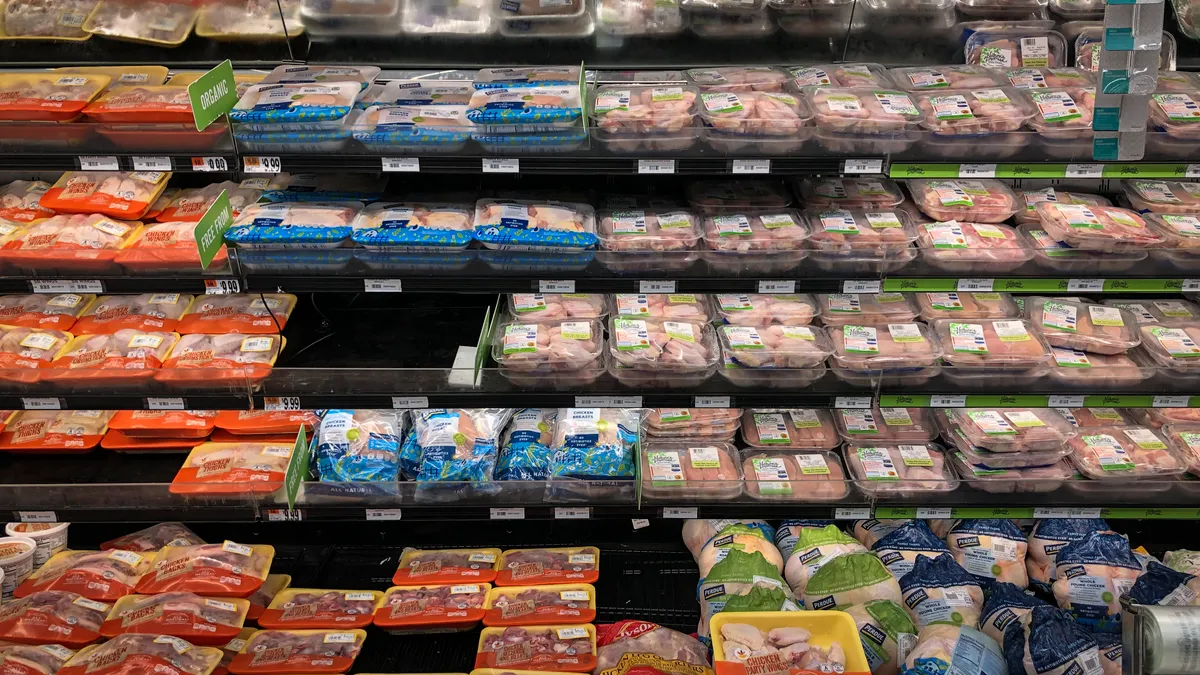Traditional supermarkets have lost ground to other types of retailers over the past four years as competitors, including club stores and mass merchants, have grabbed market share across a range of key grocery categories, statistics from 210 Analytics and Circana show.
The shifts have occurred as consumers have gravitated to value-focused merchants, visited more retailers and switched stores in response to inflation, according to analyses of the data by 210 Analytics. Shoppers were slightly more optimistic about the state of the economy and their personal finances last December than they were at the same point in 2022, which will likely cause them to continue adjusting their spending patterns going forward, 210 Analytics said.
Alternative formats are eating away at supermarkets’ market share
Traditional supermarkets accounted for 39.8% of meat sales in 2023, compared with 23.3% for mass retailers and supercenters, and 12.4% for club retailers, according to 210 Analytics and Circana. In the refrigerated seafood department, traditional grocers commanded 36.8% of sales last year, compared with 6.4% for mass retailers and supercenters, and 21.2% for club retailers.
While traditional supermarkets still command larger shares of those categories, their competitors are gaining ground. The erosion traditional grocers have seen since 2019 is especially pronounced in the meat and refrigerated seafood departments, the data show. Supermarkets shed about 3 percentage points of share in both of those categories between 2019 and 2023, while mass retailers and supercenters saw their portions of the categories rise by more than 2 percentage points.
The traditional grocery channel also lost market share in the bakery, deli and produce categories between 2019 and 2023 as mass retailers, supercenters and club retailers either drew a larger proportion of the market or saw sales remain steady.
Discount grocers recorded market share declines in the meat, deli, bakery and produce categories between 2019 and 2023, but drew a larger portion of refrigerated seafood sales last year than they did four years ago, the data shows.










